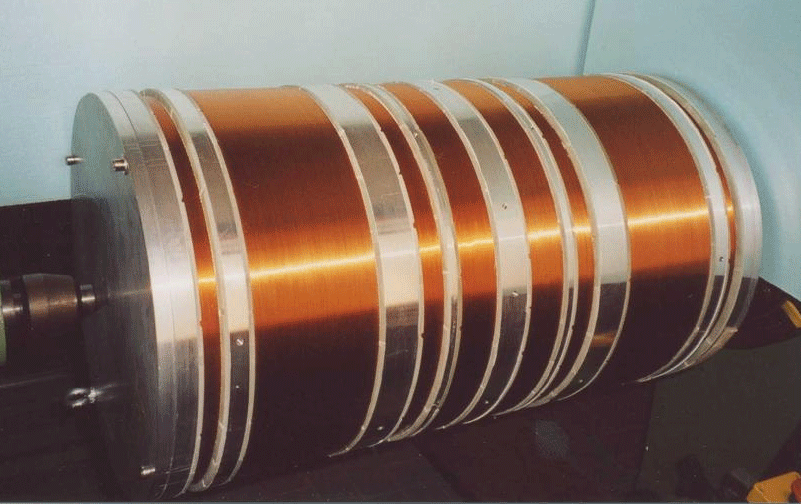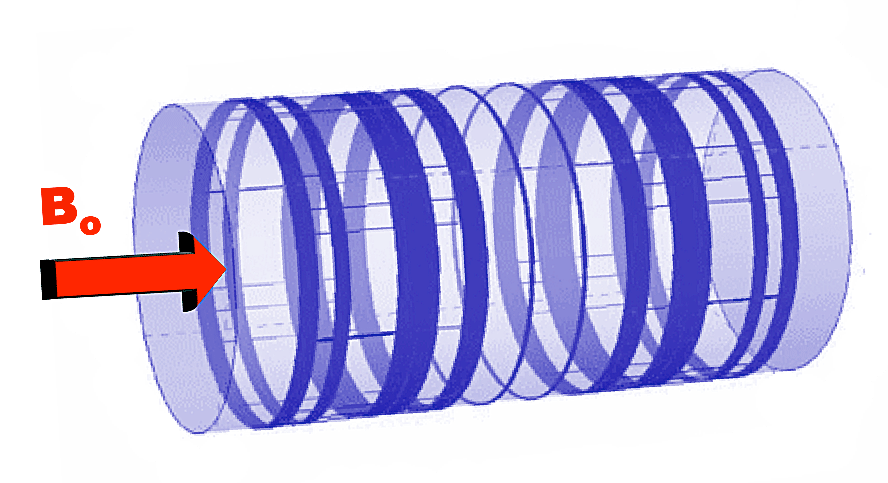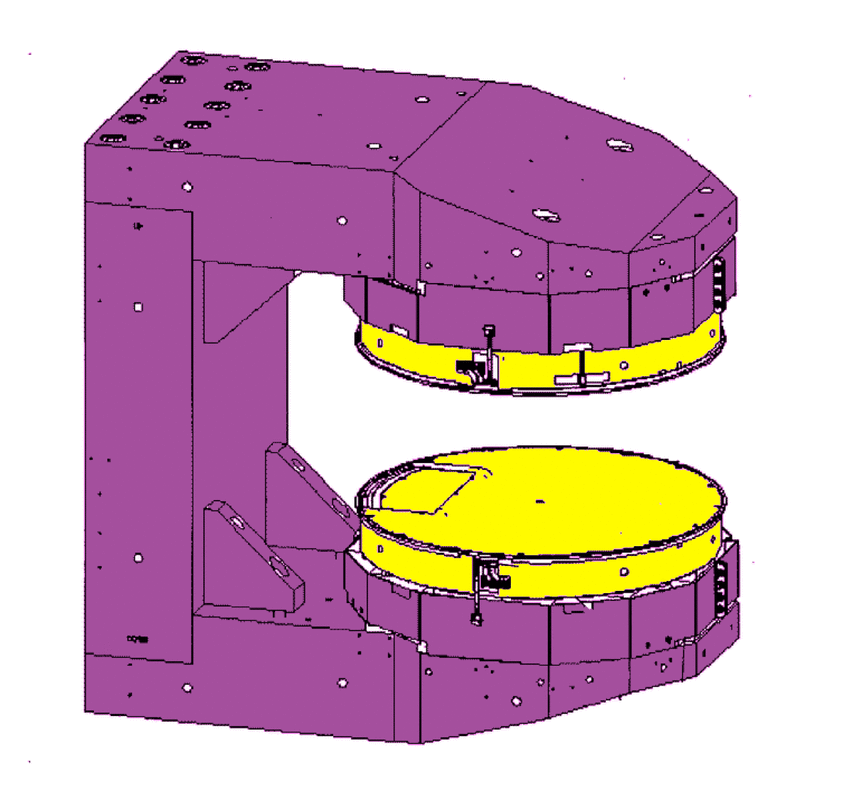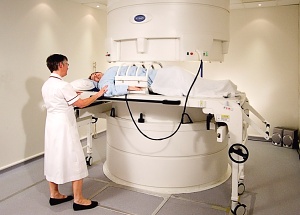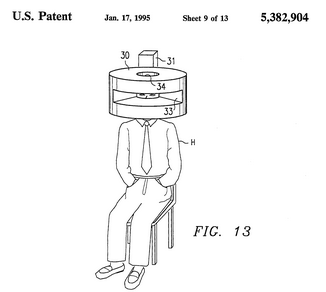MR Hardware: Extra material
Additional notes on the closed bore (cylindrical) configuration. The design of cylindrical magnets is not quite as simple as pictured above. A single continuous solenoidal winding will only produce a completely homogenous central field if infinite in length. For coils truncated to the 2-3 meter range, a single solenoid would not provide a sufficiently uniform field for MR imaging. The homogeneity problem is solved by breaking up the main coil into 6-10 separate windings with gaps in between as shown below. This configuration maintains symmetry of the field along the z-axis (Bo direction), minimizes fringe fields at the ends of the scanner, and improves homogeneity centrally. There are, as expected, some minor fluctuations in field strength along the z-axis, with minimally higher fields directly under the bands and minimally lower fields within the gaps.
Additional notes on C-shaped configurations. Although it is tempting to think of the entire C-shaped structure being a solid permanent magnet, that is not actually the case. C-shaped open magnets are composed of a ferromagnetic yoke and pole pieces (shoes). The yoke itself is not magnetically saturated. Field generation is created by a pair of magnets located at the ends of the yoke on both sides of the air gap. For permanent magnet scanners, these pole pieces are often a set of neodymium-boron-iron magnetic blocks or disks. Resistive or superconducting electromagnets can also be used. In the latter case, the yoke is not a flux link but only serves to hold the superconducting magnets in exact alignment.
Other configurations. A variety of other related but interesting configurations exist. The FONAR 360°™ (below left) is a dipolar resistive electromagnet whose pole pieces protrude from the ceiling and the floor. There is no visible magnetic yoke as it is embedded the walls of the room, thus allowing 360° access to the patient.
Question?
Advanced Discussion (show/hide)»
No supplementary material yet. Check back soon.
References
Elster AD, Burdette JH. Questions and Answers in MRI, 2nd ed. St. Louis: Mosby, 2001, pp 1-3.
"Magnetism." Wikipedia, The Free Encyclopedia (Accessed 1 Aug 2013)
Elster AD, Burdette JH. Questions and Answers in MRI, 2nd ed. St. Louis: Mosby, 2001, pp 1-3.
"Magnetism." Wikipedia, The Free Encyclopedia (Accessed 1 Aug 2013)
Related Questions
What causes magnetism?
What causes magnetism?
